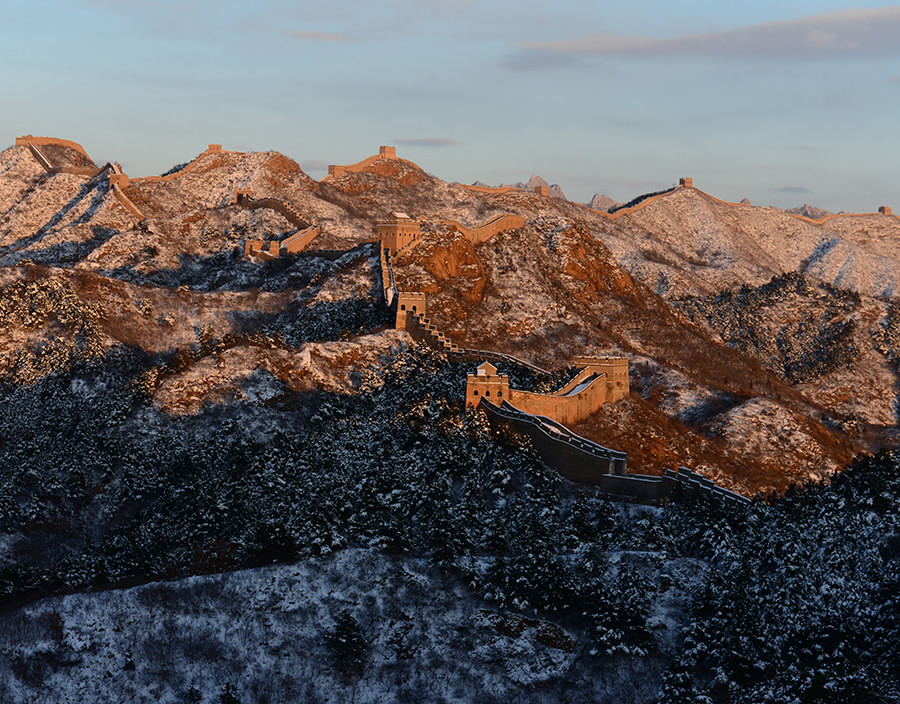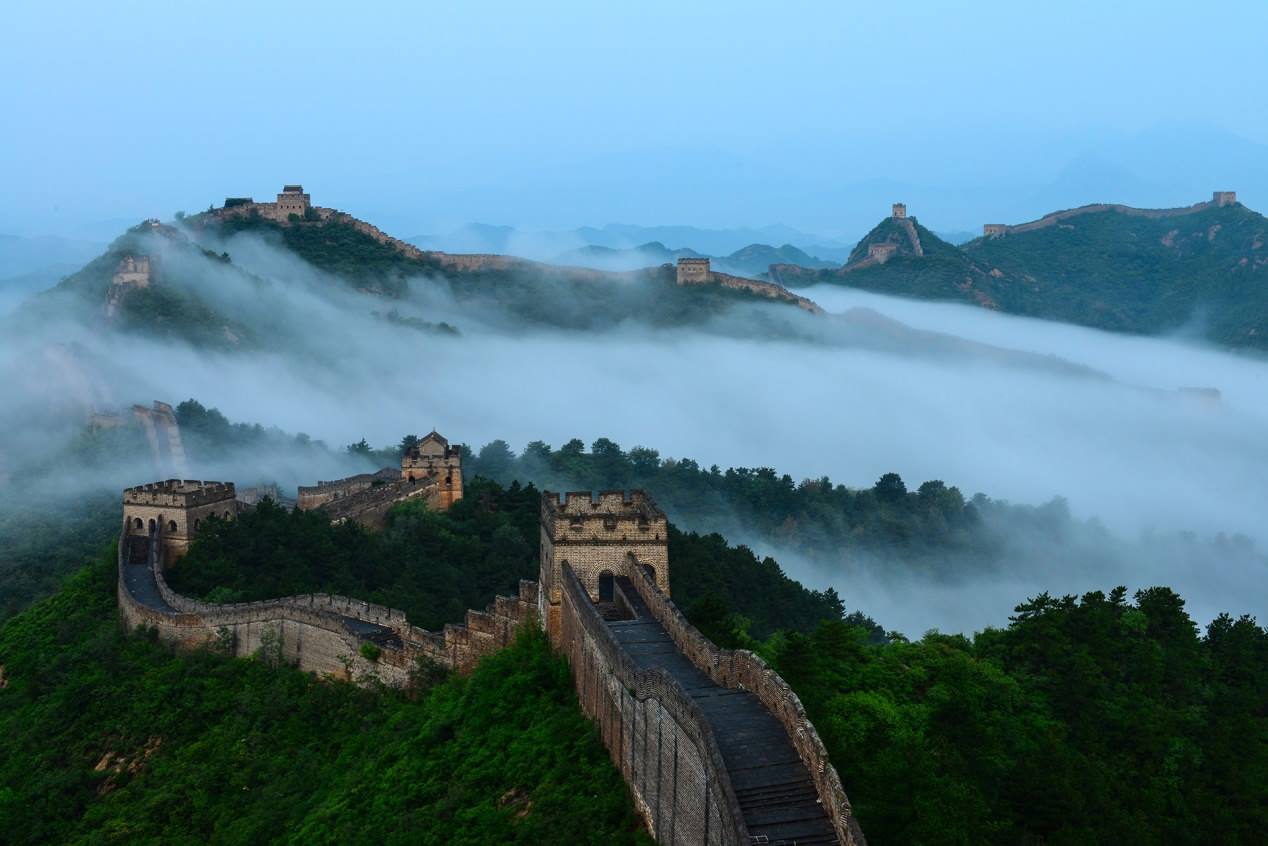(By CGTN's Zheng Quanbin)
The Chinese call the Great Wall “Chang Cheng,” which literally means “Long Wall.” And calling it “long” may be an understatement.
After a five-year survey, Chinese authorities in 2012 concluded that the Great Wall measures a total of 21,196.18 km. It starts from the eastern coast and stretches into the far western deserts, winding through 404 towns in 15 provincial regions across northern and central China.

The Great Wall built on ridges. /Zhou Wanping Photo
The Great Wall was declared as one of the New Seven Wonders of the World in 2007. UNESCO acknowledged it as the largest man-made structure on Earth.
The wall is made out of a variety of materials, including stone, brick, rammed earth, and wood. Individual walls were built as early as the 3rd Century BCE; however, it was during the Ming Dynasty (1368-1644 CE) that the Great Wall truly flourished. Rulers from that period built and fortified structures stretching nearly 9,000km. The majority of the existing walls date back to the Ming Dynasty.

The Great Wall after snow. /Zhou Wanping Photo
To undertake the monumental task of building, maintaining and restoring walls, millions of people were recruited, and for some it was mandatory. Often, huge stones and massive bricks had to be transported to lofty mountain ridges. And without powerful or sophisticated machinery during ancient times, laborers could only use their bare hands. The exact number of the deaths which occurred during construction is unclear, but historical records show exhaustion, hunger and accidents claimed many lives.
The walls were a method of border control and also served as defense against nomadic invaders from the north. The Great wall is about 7m high and 6m wide, and main structures include watch towers, signal towers and passes.

The Great Wall in fog. /Zhou Wanping Photo
In 1987, it was listed as a UNESCO World Heritage site, and the cultural icon welcomes millions of visitors every year from around the world. Famous sections include Badaling, Mutianyu and Jinshanling.
But natural wear and tear, as well as poor maintenance, has taken its toll on the massive structure. Today, only 8.2% of the Great Wall built during Ming Dynasty is well preserved. Three-quarters is in bad shape and a third has even disappeared.

Dilapidated wall and tower. /Zhou Wanping Photo
Now, it is up to the Chinese government, NGOs, as well as individuals to conserve their national pride.
3km










